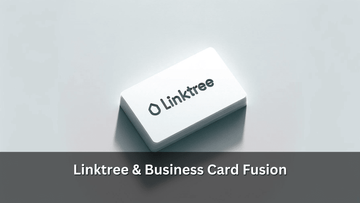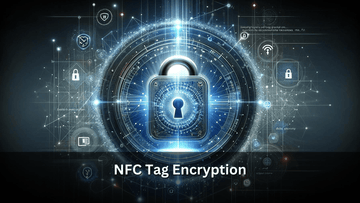QR Feedback Revolution

How to Create a QR Code Survey: Gather Feedback Wherever Your Customers Are
QR Codes and Their Popularity
The resurgence of QR codes in the post-pandemic era signifies a notable shift in consumer behavior and technological adoption. Originally developed in the 1990s for tracking vehicle parts during manufacturing, QR codes have transcended their initial purpose, becoming an essential tool in bridging the physical and digital realms. Their popularity soared as businesses sought contactless solutions to engage with customers, ensuring safety without sacrificing interaction. Today, QR codes are omnipresent, from restaurant menus to retail checkout points, offering a seamless, quick, and interactive way for consumers to access information, make payments, and provide feedback. This resurgence is not just about convenience; it represents a broader digital transformation, where the physical world is increasingly intertwined with digital experiences. QR codes have become a symbol of this new era, highlighting their role as a simple yet powerful tool for instant communication and engagement in various industries.
What is a QR Code Survey?
A QR Code Survey represents a modern and efficient method for gathering feedback directly from customers in real-time. Utilizing the quick response (QR) code technology, which consists of black squares arranged on a white square grid, businesses can seamlessly connect with their customers. When scanned with a smartphone camera, these QR codes direct users to online surveys or feedback forms. This technology eliminates the need for cumbersome paper forms or the necessity to manually enter URLs, offering a direct pathway to digital questionnaires.
For businesses, QR code surveys are a game-changer. They enable the collection of immediate feedback on products, services, or experiences while the customer's memory is fresh, leading to more accurate and genuine responses. This tool is invaluable for assessing customer satisfaction, gathering insights on user experience, and identifying areas for improvement.
Customers benefit from the convenience and ease of use. With just a quick scan, they're able to voice their opinions or rate their experiences without significant disruption to their day. This simplicity increases the likelihood of participation, providing businesses with a broader data set to inform their decisions. QR code surveys epitomize the intersection of convenience and technology, offering a straightforward solution for real-time customer engagement. For more detailed insights into QR code surveys, you can explore further at SurveySparrow's blog on the subject here.
Why Create a QR Code Survey?
Creating a QR code survey offers numerous benefits pivotal to enhancing customer engagement and business growth. Primarily, it facilitates the collection of real-time feedback, allowing businesses to swiftly address concerns, adapt strategies, and improve customer experience on the fly. This immediacy ensures that feedback is relevant and actionable, a significant advantage over traditional methods that often involve time-consuming data collection and processing.
Moreover, QR code surveys typically enjoy higher response rates due to their convenience and accessibility. Customers are more likely to participate in a survey that requires minimal effort — a simple scan with their smartphone. This increased engagement provides businesses with a richer dataset for analysis, enabling more accurate insights into customer preferences and behavior.
Ultimately, the use of QR code surveys can lead to enhanced customer satisfaction. By demonstrating a commitment to listening and rapidly implementing feedback, businesses can build stronger relationships with their customers. This proactive approach to feedback management not only helps in rectifying issues but also contributes to a positive brand image, encouraging loyalty and repeat business.
You Can Create Them for Free
The advent of free tools for creating QR codes, such as the one available at NFC Tagify, has significantly democratized the process, making it accessible to businesses of all sizes. These platforms offer a user-friendly interface that simplifies the creation of QR codes, even for those with minimal technical expertise. Users can design custom QR codes that align with their branding, choosing colors, shapes, and even embedding logos to maintain brand consistency across digital and physical marketing materials.
Accessibility is a core advantage of using such tools. They enable businesses to reach a wider audience by removing technological and financial barriers. This inclusivity is essential for capturing diverse customer feedback and ensuring that all voices are heard. Furthermore, these free platforms often come with additional features like tracking and analytics, allowing businesses to monitor engagement rates, scan locations, and more. This comprehensive approach ensures that QR code surveys are not only easy to create but also powerful in gathering meaningful insights.
When to Use a QR Code Survey
QR code surveys are versatile tools that can be utilized in various contexts to gather insightful feedback across multiple touchpoints in the customer journey. Their application is broad, ranging from product evaluations to assessing the effectiveness of marketing materials. For a comprehensive overview of how QR code surveys can be applied and optimized, including best practices and strategic considerations, check out Zonka Feedback's insights on QR code surveys.
-
Product or Service Experience Feedback
Immediately after a purchase or service experience, QR codes can be presented on receipts, packaging, or checkout screens. This allows businesses to capture customers' perceptions and satisfaction levels while the experience is still fresh, facilitating timely improvements and adjustments to offerings.
-
Conference and Event Feedback
At conferences and events, QR codes can be strategically placed on badges, event programs, or signage, inviting attendees to share their experience. This feedback can provide valuable insights into the event's success, areas for improvement, and attendees' engagement with various sessions or speakers.
-
Printed Ad and Marketing Material Feedback
QR codes incorporated into printed ads, flyers, or brochures can serve as a direct feedback channel on the marketing material's effectiveness. Tracking engagement through these codes can help refine marketing strategies, understanding which messages resonate most with the target audience.
-
Commercial Space and Facilities Services Feedback
For businesses with physical locations, such as retail stores, restaurants, or service centers, QR codes placed within the premises can solicit feedback on cleanliness, service quality, and overall customer experience. This real-time input enables immediate action to enhance the physical environment and service delivery.
QR Code Survey Best Practices
Adopting QR code surveys into your feedback collection strategy significantly enhances customer engagement and data quality. To ensure their effectiveness, it's crucial to follow best practices that ensure a positive user experience and valuable business insights. For an in-depth guide on optimizing your QR code surveys, including placement and design tips, check out Bitly's insights on QR codes for surveys.
-
Clearly State What Scanning the QR Code Will Do
Transparency is key when encouraging customers to engage with QR code surveys. Clearly indicating what happens after the QR code is scanned — whether it’s taking them to a feedback form, a promotional page, or a registration site — can significantly increase participation rates. This clarity helps set the right expectations and assures users of the legitimacy and purpose of the QR code, mitigating any hesitation due to privacy concerns or spam. Providing a brief description next to the QR code, such as “Scan to share your experience with us,” can foster trust and willingness to engage.
-
Ensure Mobile-Friendly Surveys
The very nature of QR codes necessitates a mobile-first approach to the linked surveys. Ensuring that these surveys are mobile-friendly, with responsive design that adapts to various screen sizes and orientations, is non-negotiable. A mobile-friendly survey offers a seamless user experience, preventing frustration that can arise from difficult navigation, slow loading times, or poorly formatted questions on a mobile device. This focus on usability can drastically improve completion rates, as participants are more likely to complete the survey if the process is straightforward and hassle-free. Additionally, optimizing for mobile includes minimizing the number of steps required to complete the survey, using simple question formats, and ensuring the survey loads quickly on all types of devices.
Conclusion
Incorporating QR code surveys into your feedback collection arsenal offers a unique blend of immediacy, convenience, and engagement. By adhering to best practices and strategically deploying QR codes across various customer touchpoints, businesses can unlock invaluable insights directly from their audience. This real-time feedback mechanism not only elevates the customer experience but also empowers companies to make data-driven decisions swiftly, ensuring continuous improvement and a competitive edge in today’s dynamic market landscape.









